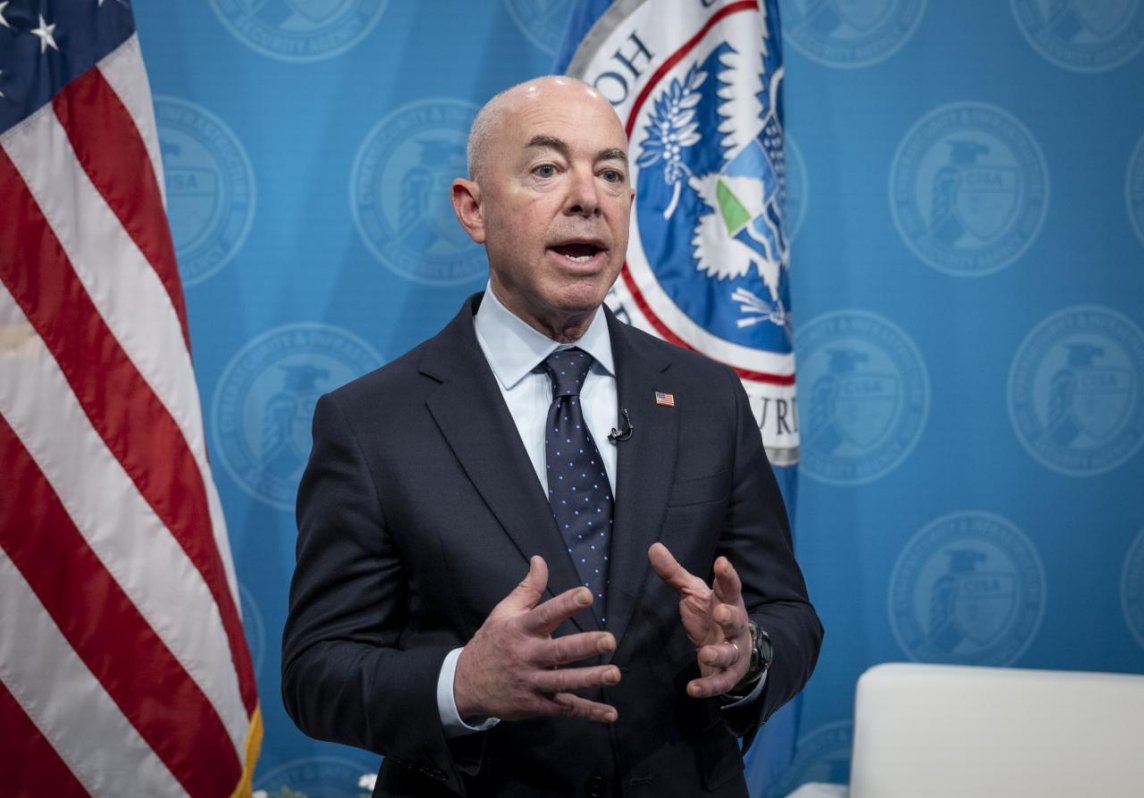Homeland Security Announces Immigration Enforcement Changes that Take a More "Humane" Approach

On October 27, Secretary of Homeland Security Alejandro N. Mayorkas issued a new policy to guide Immigration and Customs Enforcement (ICE) and Customs and Border Protection (CBP) enforcement actions in or near protected areas, replacing previous sensitive locations guidance.
On October 27, Secretary of Homeland Security Alejandro N. Mayorkas issued a new policy to guide Immigration and Customs Enforcement (ICE) and Customs and Border Protection (CBP) enforcement actions in or near protected areas, replacing previous sensitive locations guidance.
The first-ever policy for both ICE and CBP provides an expanded and non-exhaustive list of protected areas, including new designations, such as places where children gather, disaster or emergency relief sites, and social services establishments.
The new policy, which is effective immediately, supersedes and rescinds all previous sensitive locations guidance and establishes that "enforcement actions should not be taken in or near a location that would restrain people's access to essential services or engagement in essential activities."
"In our pursuit of justice, including in the execution of our enforcement responsibilities, we impact people's lives and advance our country's well-being in the most fundamental ways. As a result, when conducting an enforcement action, ICE and CBP agents and officers must first examine and consider the impact of where actions might take place, their effect on people, and broader societal interests," said Secretary Mayorkas. "We can accomplish our law enforcement mission without denying individuals access to needed medical care, children access to their schools, the displaced access to food and shelter, people of faith access to their places of worship, and more. Adherence to this principle is a bedrock of our stature as public servants."
DHS officers and agents were directed to "use their judgment" to determine whether a location is a "protected area," taking into consideration the activities that take place there, the importance of those activities to the well-being of people and the communities of which they are a part, and the impact an enforcement action would have on people's willingness to be in the protected area and receive or engage in the essential services or activities that are offered there.
Some examples of protected areas include, but are not limited to:
- Schools, such as known and licensed daycares, pre-schools, and other early learning programs; primary schools; secondary schools; post-secondary schools up to and including colleges and universities; as well as educational or education-related activities or events
- Medical treatment and healthcare facilities, including COVID-19 vaccination locations
- Places of worship or religious studies, such as churches, synagogues, mosques, and temples
- Places where children gather such as a playground, recreation center, childcare center, before- or after-school care center, foster care facility, a group home for children, or school bus stop
- Social services establishments such as a crisis center, domestic violence shelter, victims services center, child advocacy center, supervised visitation center, family justice center, community-based organization, facility that serves disabled persons, homeless shelter, drug or alcohol counseling, and treatment facility, or food bank or pantry or other establishment distributing food or other essentials of life to people in need.
- Disaster or emergency response and relief centers
- Religious or civil ceremonies or observances, such as funerals and weddings
- Public demonstrations, such as parades, demonstrations, or rallies
All employees for whom this guidance is relevant will receive updated training. Additionally, the agency stressed that any enforcement action taken in or near a protected area must be fully documented in each component's Privacy Act-compliant electronic system of record in a manner that can be searched and validated.
Termination of the Migrant Protection Protocols (MPP) program
Secretary of Homeland Security Alejandro N. Mayorkas also issued a new memorandum on the last week of October, announcing his decision to terminate the Migrant Protection Protocols (MPP) program. The program is a Trump-era directive requiring migrants to wait in Mexico for US immigration court hearings.
The termination would be the Biden Administration's second attempt to end the policy after a previous effort was blocked in federal court.
The memo argues that the policy, also known as "Remain in Mexico," caused more harm than good, particularly its humanitarian impact.
"This Administration is tackling longstanding problems that have plagued our immigration system for decades to achieve needed systemic change. MPP does not help meet this goal," said Secretary Mayorkas. "MPP had endemic flaws, imposed unjustifiable human costs, pulled resources and personnel away from other priority efforts, and did not address the root causes of irregular migration. MPP not only undercuts the Administration's ability to implement critically needed and foundational changes to the immigration system, but it also fails to provide the fair process and humanitarian protections that individuals deserve under the law."
According to the agency's official statement, Secretary Mayorkas conducted an extensive review to assess whether MPP should be maintained, terminated, or modified. He studied court documents, relevant data, internal reviews, and publicly available materials. He met with a broad and diverse array of internal and external stakeholders, including DHS personnel and state and local officials, and community leaders across the country.
"Secretary Mayorkas concluded that the benefits do not justify the costs, particularly given how MPP detracts from other regional and domestic goals and policy initiatives that better align with this Administration's values."







